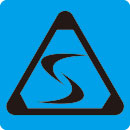

| solid CBN insert |
| thoroughly brazed |
| PCBN tipped insert |
| C (80° diamond) |
| D (55° diamond) |
| T (60° triangle) |
| V (35° diamond) |
| S (90° square) |
| W (80° hexagon) |
| Full face PCD insert |
| PCD tipped insert |
| C (80° diamond) |
| D (55° diamond) |
| T (60° triangle) |
| V (35° diamond) |
| W (80° hexagon) |
What is PCD? |
pcd is simply an acronym for polycrystalline diamond, it is technically a diamond grit, which has been merged under high temperature and high pressure conditions, along with the introduction of a catalytic metal in the process. pcd diamond has a hardness close to natural diamond, and available for mass production by modern industry with lower price, so it is a idea material used for super hard metal cutting. |
History of PCD |
In 1797, it was discovered that diamond was a pure carbon. As a result, many scientists tried to transform a number of cheap carbon forms into diamond. Some of the successful scientists to accomplish that were James Hannay and Ferdinand Moissan in 1879 and 1893. In the transformation of carbon to diamond, it involved the heating of charcoal to a maximum of 3500 degrees Celsius. This was heated when iron was placed in a carbon crucible. The crucible was then placed in the furnace for maximum heating. |
In the case of Hannay, he used a heated tube with a flame, whereas Moissan used an electric arc furnace. The electric arc was hit between the carbon rods that are placed in the lime blocks. The iron that was melted was then cooled rapidly by being immersed in water. The cooling of the iron helped to generate the contraction of the iron, which gave out the high pressure that was needed to change the graphite into pure diamond. |
This is why it is called synthetic diamond, since it was produced in an artificial method that forced it to transform into diamond. It is also the cheapest way that was used to produce diamond. |
During the development of cutting tools, high speed steel was the major cutting tool materials in the last century. In 1927, tungsten carbide tool was firstly invented in Germany and later on extensively used in coming decades. The successful synthesis of diamond in 1950s increased the applications of super hard cutting tool materials. later in 1970s, polycrystalline diamond was synthesized by HPHT process, and now pcd inserts and pcbn inserts are very common. |
The making of the PCD |
Generally, the polycrystalline diamond is less costly to produce, compared to the single crystal diamond. Currently, there are more techniques that are used to grow the pcd materials in a large scale production. The materials can be developed using the CVD, Chemical Vapor Deposition process, which is also a similar method used for making the single crystal diamond. Another method that is used to make this type of material is the hot filament technique. The hot filament method entails the placing of a giant light bulb over the growth substrate, under a low pressure. After this, a careful control is made in the growth process and the pcd can be grown for the sake of making it have intrinsic properties. Also, this helps to make it able of making it conductive to electricity. |
As of now, there are 200mm substrates that contain a diamond film. For that, the pcd material is made more compatible with most of the modern production, especially the systems of semiconductor fabrication. This method is highly used as a method of manufacturing a highly reliable heat spreader for gallium arsenide and silicon devices. Also, it is believed that the modern mobile phones that are in the form of a PDA might have some bit of polycrystal diamond. |
The Polycrystalline diamond materials prove to be tough and quite reliable, which is why it is mostly used in high level productions. |
| HOME | About us | PCD insert | PCBN insert | Site map | Contact us | Technical FAQ |
We export PCD inserts to world wide countries, such as USA united states, Germany, UK united kingdom, Italy, France, Turkey, Russia, Saudi Arabia, United Arab Emirates, Ukraine, Israel, Canada, South Africa, South Korea, Japan, Australia, New Zealand, Finland, Sweden, Norway, Danmark, Switzerland, Poland, Czech,Ireland, Holand, Belgium, Greece, Croatia, Spain, Portugal, Egypt, India, Philippines, Cambodia, Thailand, Malaysia, Singapore, Indonesia, Mexico, Brazil, Colombia, Chile, Argentina etc. |
| Contact: Richard | Tel: +0086-13929967797 | E-mail: sales@pcd-insert.com |